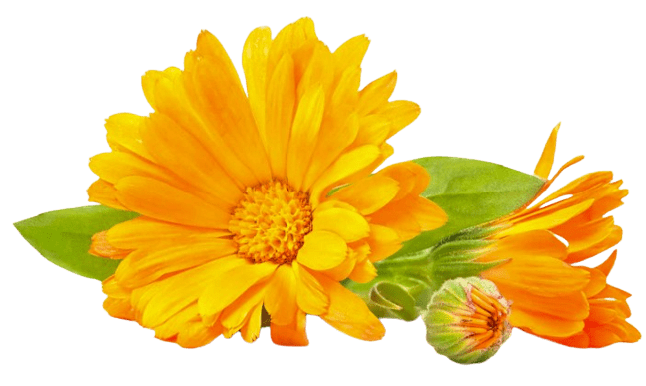The Skincare Benefits of Calendula Officinalis
You may recognise this classic flower, but do you know its wonderful skin care benefits? The calendula flower (pronounced: cal-en-du-la) is historically prized for its anti-inflammatory skin healing properties. It can help calm redness and ease skin discomfort for any type of skin. Calendula can assist wound healing and provide some relief from conditions like eczema and nappy rash. It’s these skin soothing qualities that make calendula an ideal choice for inclusion in the Skyezone face moisturiser range.
How is calendula goodness extracted?
Note: 100% of the calendula we use is organically grow right here at Skyezone. The flower petals are carefully plucked throughout the cooler months. The central-coloured stamen are never used as they can potentially cause sensitivity.
There are two extraction techniques: a) Oil infusion b) Juicing
- Cover with the carrier oil. Allow air bubbles to escape then seal.
- Allow to stand 3-5 weeks on a shelf in sunlight below 40C.
- When ready, strain off the plant material (for compost) and store in airtight glass containers and refrigerate until required.
- Add a dated label to the containers.
Here are just 2 Skyezone products with a high percentage of calendula:
Calendula Infused Vit E oil and Sinus Ease
Calendula Petal Juice
This process is messy but results in a fantabulous calendula concentrate, which is ideal for use in lotions and creams.
Juicing Steps:
- Harvest the petals i.e. 1 or more x vitamiser containers to make it worthwhile. The petals freeze perfectly so you can add to the petal collection over time.
- Use a juice extractor and minimal distilled water to lubricate the petals. The leaves can be fed through the juicer 2 or 3 times.
- Store in labelled small glass jars (that can tolerate freezing) for later use.
- The squeezed pulp can be dried and then re-used for infusing oils.
Here are Skyezone’s Face Products - if it's golden it contains calendula.
If you’d like to grow calendulas (also a wonderful companion herb) they’re easy and prefer cooler months. They will self-seed prolifically and don’t require any attention, except to water and harvest. Excess seedlings will transplant well while tiny.
For those who enjoy clinical research, jump into these PubMed studies to review the use of calendula in:
- Wound Healing (Pubmed)
- Tissue damage from radiotherapy (Pubmed)
- Repairing diabetic ulcer (Pubmed)
Please contact me if you have any ideas or issues you’d like to see discussed here in future. Be safe, with kind regards, Jennifer.
Published June 2022



